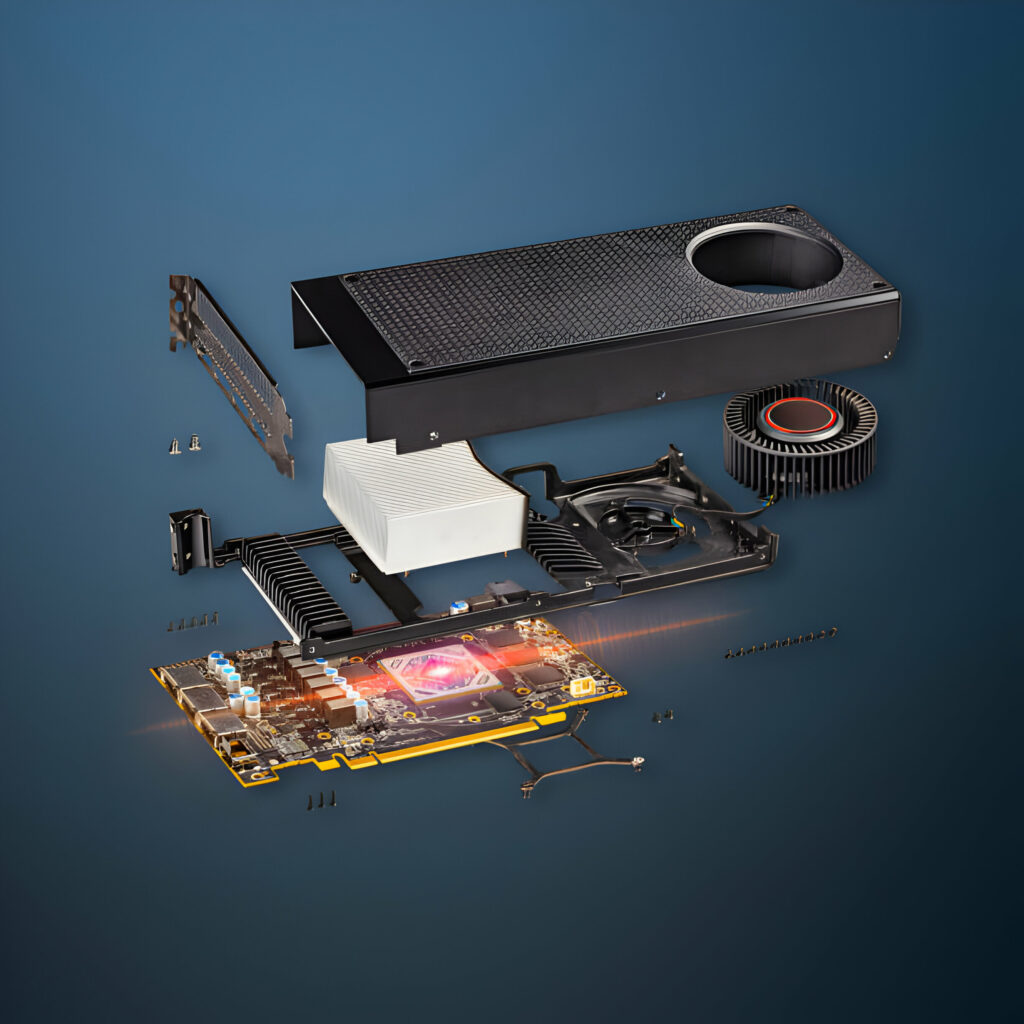Common desktop Hardware Problems: Hardware problems are a common occurrence in the world of desktops. Users may experience a range of issues, from hardware malfunctions and overheating to display issues. This article examines several typical hardware problems and provides advice on how to successfully troubleshoot and fix them.
We will offer a condensed version covering the most common issues and their resolutions:
A) Screen Flickering or Display Issues:
- Solution: Adjust display settings, reset NVRAM/PRAM, update macOS, or seek professional repair if the issue persists.
- Troubleshooting: Check for loose cables, update graphics drivers, and run hardware diagnostics through a trusted laptop repair service in Dubai.
B) Slow Performance:
- Solution: Close unnecessary applications, manage startup items, upgrade RAM or storage, and perform regular maintenance tasks.
- Troubleshooting: Monitor CPU and memory usage, check for resource-intensive applications, and scan for malware or viruses.
C) Overheating:
- Solution: Ensure proper ventilation, clean dust from vents, use a cooling pad, avoid blocking airflow, and reset SMC.
- Troubleshooting: Monitor temperature using third-party software, check fan functionality, and inspect for dust buildup.
D) Startup Issues or Failure to Boot:
- Solution: Reset NVRAM/PRAM, boot into safe mode, repair disk using Disk Utility, reinstall macOS, and replace faulty hardware components.
- Troubleshooting: Check for peripheral interference, disconnect external devices, and perform hardware diagnostics.
E) Noisy Fans or Fan Issues:
- Solution: Clean dust from fans and vents, reset SMC, adjust fan speed settings, and replace faulty fans if necessary.
- Troubleshooting: Listen for abnormal fan noises, monitor fan speed using third-party software, and check for obstructions by best desktop repair services Dubai.
F) Hardware Connectivity Problems:
- Solution: Ensure cables are securely connected, use compatible peripherals, reset SMC and PRAM, and update drivers.
- Troubleshooting: Check for physical damage to ports or cables, test peripherals on another device, and inspect for software conflicts.
G) Hard Drive Failure or Data Corruption:
- Solution: Back up data regularly, repair disk using Disk Utility, replace failing hard drive with an SSD or HDD, and recover data using specialized software.
- Troubleshooting: Listen for clicking or grinding noises, run disk diagnostics, check SMART status, and scan for bad sectors.
H) Bluetooth or Wi-Fi Connectivity Issues:
- Solution: Restart Bluetooth or Wi-Fi modules, reset network settings, update drivers, check for interference, and relocate the desktop closer to the router.
- Troubleshooting: Test connectivity with other devices, adjust router settings, update firmware, and scan for nearby devices causing interference with Smart Watch repair in Dubai.
I) USB Ports Not Working:
- Solution: Reset SMC and PRAM, check for physical damage or debris in ports, use a different USB cable or adapter, and update macOS and drivers.
- Troubleshooting: Test ports with multiple devices, inspect for bent pins or short circuits, and try different USB peripherals.
J) Cracked or Damaged Screen:
- Solution: Contact Support or an authorized service provider for repair or replacement, use a screen protector to prevent further damage.
- Troubleshooting: Assess the extent of the damage, backup data if possible, and avoid using the desktop until it’s repaired.
K) Graphics Card Issues:
- Solution: Update graphics drivers, reset SMC and PRAM, replace the graphics card, if necessary, monitor for overheating.
- Troubleshooting: Check for artifacts or glitches on the screen, run GPU stress tests, and inspect for loose connections, it is solved by best tablet repair service Dubai.
L) Random Shutdowns or Freezes:
- Solution: Check for software conflicts or incompatible applications, reset SMC and PRAM, repair disk using Disk Utility, and update macOS and drivers.
- Troubleshooting: Monitor system temperature, check for kernel panic logs, run hardware diagnostics, and test RAM for errors.
M) Strange Noises from Internal Components:
- Solution: Identify the source of the noise (e.g., fan, hard drive), clean or replace the affected component, and seek professional repair if necessary.
- Troubleshooting: Listen for abnormal noises during operation, run hardware diagnostics, and monitor system temperature.
N) Keyboard or Mouse Malfunctions:
- Solution: Replace batteries if wireless, clean or replace the keyboard/mouse, reset SMC and PRAM, and update macOS and drivers.
- Troubleshooting: Test with another keyboard/mouse, check for physical damage or debris, and ensure Bluetooth/Wi-Fi connectivity.
O) Power Supply Failure:
- Solution: Check the power cable and connections, reset the SMC, test with a different power outlet, and replace the power supply unit if necessary.
- Troubleshooting: Use a multimeter to check power output, inspect for physical damage to the power cable, and test with another desktop-compatible power cable.
By following these solutions and troubleshooting tips for mobile phone repair in Dubai, users can address common hardware issues with their desktops effectively, ensuring optimal performance and longevity of their devices.
Even though experiencing hardware issues with your desktop can be unsettling, many problems can be fixed with the appropriate troubleshooting techniques and solutions. You can guarantee the ongoing dependability and effectiveness of your desktop by swiftly resolving common hardware issues like sluggish performance, connectivity issues, and odd noises. Preventing hardware problems and extending the life of your desktop can also be achieved with routine maintenance, software upgrades, and appropriate care.

